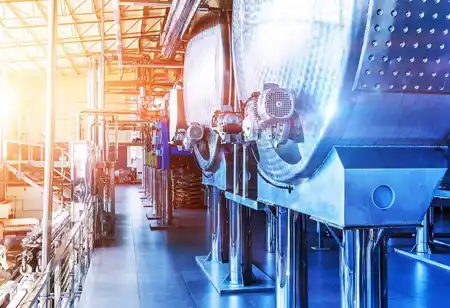The circular economy in the chemical industry signifies a shift towards responsible and sustainable practices
FREMONT, CA: In an era marked by growing environmental concerns and resource scarcity, the circular economy concept has gained significant traction across various industries. The chemical sector, a pivotal player in the global economy, embraces this paradigm shift towards a circular approach. By rethinking traditional linear production models, the chemical industry is moving towards sustainable practices that minimize waste, conserve resources, and contribute to a more environmentally friendly future.
The Circular Economy: A New Approach
A circular economy is fundamentally different from the linear "take-make-dispose" model. Instead of producing goods that eventually become waste, the circular approach emphasizes extending the lifecycle of products and materials. This is achieved through recycling, reusing, refurbishing, and remanufacturing strategies.
For the chemical industry, this means moving beyond focusing solely on production and consumption and considering the entire lifecycle of chemicals and materials, from their creation to their eventual end-of-life.
Closing the Loop in Chemicals
The concept of a circular economy is particularly relevant to the chemical industry due to its substantial impact on resource consumption and waste generation. By adopting circular principles, chemical manufacturers can close the loop, reducing the extraction of virgin resources and curbing hazardous waste disposal.
One key strategy is promoting the recycling of chemicals and materials. This involves recovering valuable components from waste streams and reintroducing them into the production cycle. This conserves resources and reduces the environmental footprint associated with new production.
Design for Sustainability
A central tenet of the circular economy is designing products and materials with their end-of-life in mind. Chemical manufacturers are reimagining their products to be more easily disassembled, repurposed, or recycled. This design thinking contributes to a more sustainable product lifecycle, minimizing waste and enabling materials to remain in circulation.
Innovative Business Models
Circular economy principles are prompting the chemical industry to explore innovative business models. One example is the shift from selling products to offering services. Instead of purchasing chemicals, customers can lease them, and manufacturers take responsibility for their recovery and reuse. This ensures efficient resource utilization and fosters long-term customer relationships based on sustainability.
Collaboration and Closed-Loop Partnerships
Circularity in the chemical industry requires collaboration across the value chain. Manufacturers, suppliers, customers, and waste management entities must collaborate to close loops, share resources, and ensure effective recycling and recovery processes.
Closed-loop partnerships are emerging where waste from one company becomes a valuable input for another. This interconnectedness minimizes waste and enhances resource efficiency throughout the ecosystem.
Regulatory Drivers and Global Commitments
Regulatory frameworks and international agreements are increasingly aligning with circular economy principles. The industry's adoption of sustainable practices is accelerated by regulations that incentivize waste reduction, material recovery, and eco-friendly product design.
Additionally, global commitments such as the United Nations Sustainable Development Goals (SDGs) underscore the urgency of transitioning towards a circular economy. Businesses that embrace circularity comply with regulations and contribute to broader sustainability objectives.
Challenges and Future Outlook
While the circular economy holds immense promise, implementing it in the chemical industry is not without challenges. Technical, economic, and logistical barriers may arise during the transition. However, these challenges are also opportunities for innovation and collaboration.
The circular economy in the chemical sector is a journey that requires a shift in mindset, technological advancements, and systemic changes. It demands a long-term perspective that values sustainability over short-term gains.
Conclusion
By closing material loops, designing for sustainability, fostering collaboration, and embracing regulatory drivers, the industry is reducing its environmental impact and contributing to a more resilient and prosperous future. As the chemical industry continues to evolve, the circular economy emerges as a guiding principle that aligns profitability with environmental stewardship.
Regenerate

